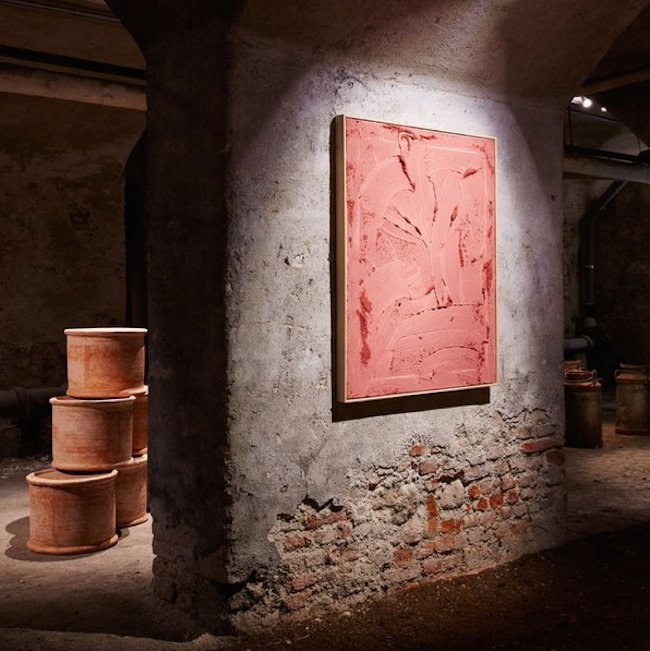PICENZA, Italy — About a year ago CFile was inundated with stories about shit creeping into contemporary ceramic art and design. The Design Academy Eindhoven did an entire showcase Eat Shit and the Onion studio manufactured terracotta hooks on which you could hang rolls of toilet paper while doing your business outside.
The thing that rankled me about these was the po-faced seriousness of each. For example, the Eindhoven exhibition pictured men inhaling feces vapor wafting out of diffusers. The men looked dour, as though they had just finished reading the critical essay accompanying the show. Onion lectured us about bathroom norms in Siam while showing pictures of a diaper-wearing infant reaching for a roll of toilet paper a few feet off the ground. This made me feel as though I was walking past an open sewer and saw a man angrily making mud pies out of the effluent. “This is serious!” he growls, eyeing me suspiciously. The attitude, the way each aggressively demanded your approval and cooperation, made them seem overeager, alienating and strange.
I was expecting more of the same when I started reading about The Shit Museum in the Picenza province of Italy, but I think they have the right idea. They’re open about what they do in a way that the earlier projects aren’t. How? By embracing the hangups we have about feces rather than pretending that the designers have evolved beyond them. Their signature product is Merdacotta (literally “baked shit”) and it’s stamped with a dung beetle, a brand signature as refined as any label you can find in Milan. All it takes is the acknowledgement that we’re in the realm of the strange, just one wink and we’re able to engage with their designs. How odd that this feels like the more adult approach! They showed at Milan Design Week this year.

The brand started in practicality. According to The Economist, farmer Gianantonio Locatelli noticed that his cows made 100,000 kilograms of manure each day. What a waste (har har)! If only this could be useful in some way.
Keen to do something productive with this noxious by-product, he invested in several state of the art digesters that could transform the excrement into fertiliser and methane gas for electricity. The next step was to extract the urea (from which plastic is produced) and dry out the remaining de-methanated concoction and use it as a raw material to make plaster, bricks and other objects.
Their tiles, tableware and flowerpots betray nothing about their origins. They remind me of vanilla terracotta, only with an interesting pinkish hue I don’t often see. They’ll take glaze, but the unglazed works have a fascinating raw, almost terracruda look. It might take me a moment to get up the courage to eat off of it, but they make a very handsome set of dishes. They’d look very much at home on a worn wooden table next to a blazing hearth.
The blocks— I’m sorry, the “Shit Cubes”— are made to be night stands, or side tables. They made me wonder if the merdacotta would be serviceable/feasible as a building material. Call it a brick shithouse. The puns practically write themselves.
Bill Rodgers is the Managing Editor of cfile.daily.
Do you love or loathe these contemporary ceramics? Let us know in the comments.









I think humour is a sign of empathy and thus and important facet of all culture. If we appreciate the humour then it enhances our understanding of what the artist is conveying.
Could not agree more.